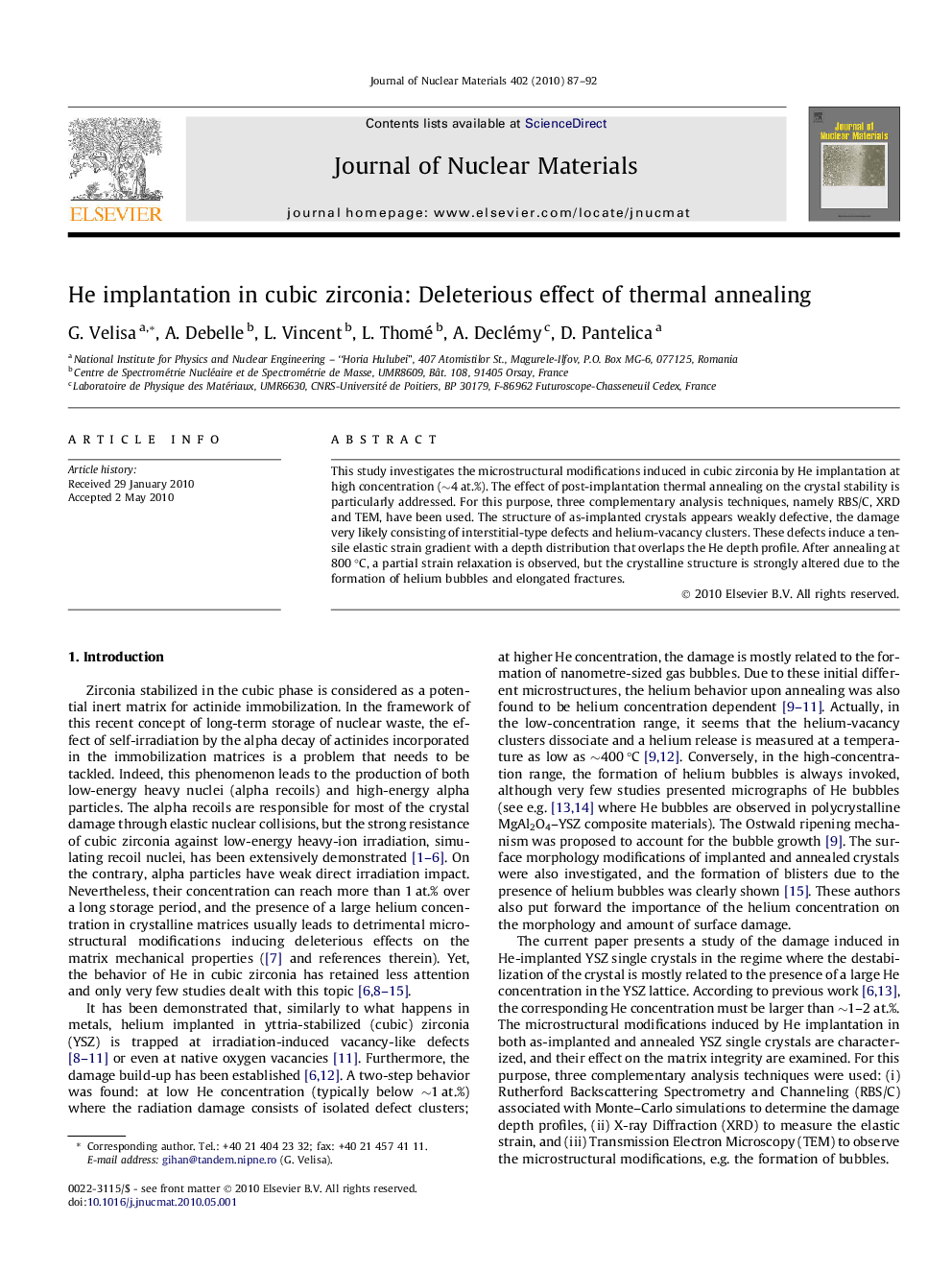| Article ID | Journal | Published Year | Pages | File Type |
|---|---|---|---|---|
| 1567168 | Journal of Nuclear Materials | 2010 | 6 Pages |
This study investigates the microstructural modifications induced in cubic zirconia by He implantation at high concentration (∼4 at.%). The effect of post-implantation thermal annealing on the crystal stability is particularly addressed. For this purpose, three complementary analysis techniques, namely RBS/C, XRD and TEM, have been used. The structure of as-implanted crystals appears weakly defective, the damage very likely consisting of interstitial-type defects and helium-vacancy clusters. These defects induce a tensile elastic strain gradient with a depth distribution that overlaps the He depth profile. After annealing at 800 °C, a partial strain relaxation is observed, but the crystalline structure is strongly altered due to the formation of helium bubbles and elongated fractures.
